Brutal forecast for Annapolis-to-Newport Race
Published on June 3rd, 2023
The 2023 Annapolis-to-Newport Race got underway June 2 and 3 on the Chesapeake Bay with competitors bracing for challenging conditions in the Atlantic Ocean.
Separate starts on consecutive days were held in light air, a far cry from what the fleet of 53 boats in eight classes are expected to encounter during the offshore passage. Forecasts call for an upwind slog in 25 to 30 knot winds and 10-foot seas.
Tony Parker has completed more Annapolis-to-Newport races than he can remember and acknowledged this will be one of the more challenging. The 77-year-old Annapolis Yacht Club member was not looking forward to pounding upwind into steep waves for 25 to 30 hours or more.
Parker is fortunate to be aboard a boat that is capable of handling such brutal beating conditions. The Washington, D.C. resident is skipper of Reindeer, a Morris 47-footer that is a renowned offshore racer. Reindeer was previously owned by Newbold Smith, who sailed her to great success in various point-to-point distance races along the Eastern seaboard.
“It is an incredibly good ocean-going vessel, especially in the type of conditions we’re going to see in this race,” Parker said. “In heavy air either beating or close reaching, it’s as good any boat in the fleet. There are a lot of other boats that are going to struggle to handle these conditions.”
This marks the eighth Annapolis-to-Newport Race for this particular Reindeer, including the fourth since Parker bought the boat in 2007. He led the Morris 47 to a runner-up result in PHRF 1 during the 2017 edition.
Reindeer was among the 33 boats in three classes that started the 38th biennial Annapolis-to-Newport Race on the second day. Those were the bigger, faster entries in the overall fleet with Reichel-Pugh 45 Katsu leading the ORC 1 class off the line as part of the first wave of starters.
That morning delivered 6 to 8 knot northeasterly winds on the Chesapeake Bay, which meant a downwind start that enabled crews to hoist spinnakers before or shortly after crossing the line. There was a favorable ebb tide that helped propel the boats as they began the 120-nautical mile Chesapeake Bay portion of the race.
After passing Norfolk and crossing the Chesapeake Bay Bridge Tunnel, the fleet rounded the Chesapeake Light and headed north toward Newport, another 355 nautical miles from the finish at the mouth of the Narragansett River.
Elapsed time record for the 475-nautical mile course was set in 2017 by the Volvo 70 Warrior, skippered by Stephen Murray of New Orleans. Blessed with favorable reaching conditions, Warrior completed the passes in 40 hours, 14 minutes and 36 seconds.
That mark will not be threatened this year due to the combination of adverse conditions and no entry with the necessary speed. In fact, it’s difficult to predict which boat would capture line honors as the fastest boats in ORC 1 and 2 are fairly evenly matched. That means strategy and sailing skill figure to determine the elapsed time winner.
With offshore conditions calling for 25-30 knot winds and 10-foot seas, an ability to keep the boat from breaking also becomes paramount.
The smaller, slower boats that started on the first day were delayed by six hours due to subpar conditions. Only one knot of breeze was forecast for the scheduled 11:00 am first warning signal, so principal race officer Dick Neville issued a postponement order and kept the boats at the dock.
Winds were more favorable in the evening and forecast to build, prompting Neville to call the fleet of 30 boats in five classes out for a 5:00 pm launch.
“All the sailors knew there would be no wind this afternoon, so they were more than happy to delay,” Neville said that afternoon.
ORC 4 was the first class to start and Christopher Dragon could not have timed it better. The Italia 11.98, owned by Larchmont Yacht Club members Andrew and Linda Weiss, hit the line with speed seconds after the gun fired.
There were seven boats in ORC 4, including a pair of identical 44-footers raced by members of the Naval Academy varsity offshore sailing team. Defiance and Integrity are two of the second generation Navy 44s designed by David Pedrick and built by Pearson Composites that are used for sail training all midshipmen.
Navy’s offshore team participates in multiple offshore distance races each summer to hone their skills and gain experience. Senior Phil Pacheco is skippering Defiance this summer after serving as helmsman aboard that boat for last summer’s Annapolis-to-Bermuda Race.
“Being the skipper is a huge responsibility. I’m responsible for the safety of the boat and all onboard,” Pacheco said. “We want to make sure we get to Newport safely, while pushing hard enough to give ourselves a chance to win the race.”
Pacheco, a native of Rio de Janeiro, Brazil, had never sailed before arriving at the academy. He is now charged with leading a group of Midshipmen during a challenging race that features inshore and offshore elements.
“It’s a lot to put on our shoulders, but all we can do is try to sail the boat to the best of our ability,” said Pacheco, who grew up in Mechanicsville, Pennsylvania. “It’s a very humbling experience learning how to sail these boats. It’s also a great opportunity to broaden our horizons. I feel great about the crew we have onboard. We have a really solid group of sailors.”
The day one starters did not make it very far overnight with a large majority still north of Solomons around 8:00 am by the following morning. However, the breeze began to fill in as the fleet got further south and leader Cookie Monster, a Salona 380 owned by Eastport Yacht Club member Stephen Hale, reached the Atlantic Ocean by 4:00 pm.
Defiance and Integrity crossed the Chesapeake Bay Bridge Tunnel shortly thereafter and were battling for second as the offshore passage began. Meanwhile, seven of the day one starters elected to retire rather than risk sustaining damage in the Atlantic Ocean.
Christopher Dragon, which was racing among the leaders that morning, abruptly dropped the sails and began motoring back to Annapolis. Weiss is chairman of Block Island Race Week and wanted to avert a catastrophic breakdown that would prevent the boat from competing in that renowned regatta that begins June 19.
Nicole (Cal 40, Thomas Campbell), Towhee (Cal 40, Paul Jennings), and A L’assaut (Dufour 40, Kurt Cerny) all took refuge in Cape Charles. Privateer, a Class 40 being sailed double-handed, pulled into Cape Charles with co-skippers Ervin Grove and Carl L.C. Kah III reporting they might resume racing after carefully reviewing the forecast.
Cimarron (J/110, Lynn McClaskey), Dancing Bear (Northeast 39, John Buzzi), and Patriot VII (J/109, Steve Young) joined Christopher Dragon in motoring back to Annapolis. Katsu, a Reichel-Pugh 45 owned by Sam and Jamie Wright, was the first of the day two starters to retire.
Ken Comerford is skipper of the J/121 Dark Storm and admitted he “almost pulled the plug” on participating in this year’s race because of the forecast. The North Point Yacht Sales owner elected to forge forward with his fourth Annapolis-to-Newport despite some reservations.
“We have seven really good sailors to push the boat,” Comerford said. “I have a lot of confidence in the boat and crew. I don’t have as much confidence in myself as I get older. I’m not sure I’m ready to pound upwind for 30 hours. It’s going to be a lot of going upwind on port tack — a real grueling race.”
Rick Hanson has enjoyed tremendous success in the Annapolis-to-Newport Race, sailing No Surrender to victory in PHRF 1 during the 2019 edition. He previously captured class honors with a J/109 named Rosalita.
The Lewes, Delaware resident has a very experienced crew consisting of sailors such as Allan Wilkens, Scott Gitchell, Chris Chadwick, and the husband-wife duo of Grant and Emily Decker who all have tons of offshore experience.
“We have close to 400 years of racing experience onboard,” said Hanson, disappointed his son Kyle could not make this year’s race. “With the current forecast, our plan is to keep the boat going in the right direction and do everything possible not to break anything. Keeping the boat moving when everyone is tired and possibly not feeling all that great will be critical.”
Event information – Race details – Tracking
Source: AYC


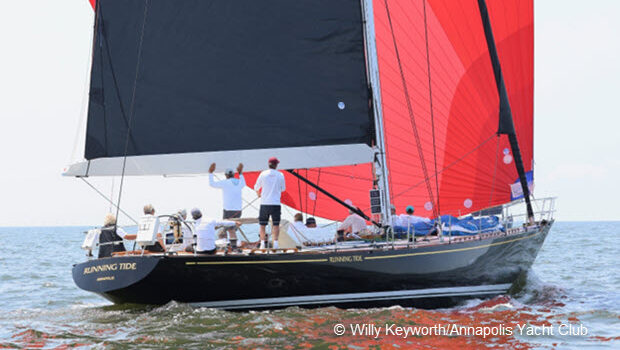


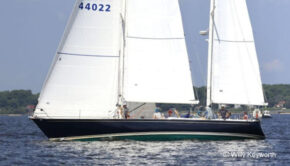
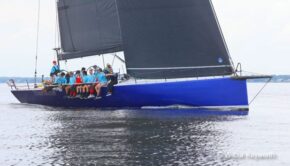
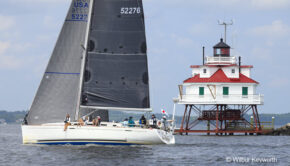
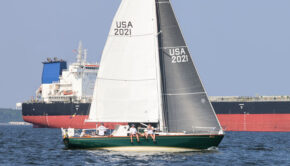
 We’ll keep your information safe.
We’ll keep your information safe.